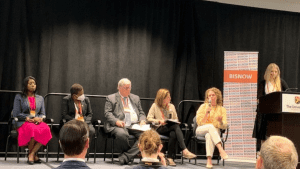
7 Ways to Make Your LinkedIn Profile Stand Out to Life Science Employers and Recruiters
Guest Post by Kyle Ireton, PhD
February 21, 2023
This guest post originally appeared on LinkedIn.
I often get questions from academics about how to increase their success with industry and biotech job applications. When I go to their LinkedIn I keep seeing their profiles fall into the same traps mine did when I was first applying. With that, I wanted to share seven points to increase recruiter engagement – leading to more screening calls, interviews, and job offers.
1. You need to describe what you can actually do
Too often I see academics introduce themselves as, “a researcher in the field of XYZ”. While others in your research field will be familiar with what you do, we cannot assume folks in industry know what that means or if you qualify for a role they’re looking to fill.
Your LinkedIn profile should be descriptive, like you lifted it straight from your resume. You can see my most recent resume from my last job search as the media post on my profile, called “Shareable resume for academics.”
2. Don’t just list your skills – details matter!
Skills developed in an academic setting are in hot demand, but you need to convince people you used them purposefully.
To be descriptive, say, “I used X technique for Y project to deliver Z outcome,” instead of just “I used X technique.” Better yet, quantify the outcome. Did it result in one new paper, poster, or presentation? Did it lead to a grant application for $X in funding? Did it save N hours of labor?
3. Don’t let imposter syndrome get to you – take ownership of your skills
You do not need to exaggerate but convey competence and confidence.
As academics, we are conditioned to put ourselves down in comparison to an imaginary expert that is theoretically perfect. In the real world, knowing how to do reliable work is the critical qualification! If you used your skills for a project with an outcome, you’re able to confidently “own” it.
4. Be specific – don’t assume the recruiter/employer knows how you used your skills
You need to be specific about individual components of your skills. “Quantitative Research” is too vague. Did you use Excel to organize, analyze, and visualize data? For Programming, did you focus on R or Python? Did you use Git and Github to track version changes or share code? These should be itemized to make crystal clear what you can bring to the table in your next role.
5. Put your most relevant skills top and center
Ironically, most academics I know are highly developed for *too many* jobs at once! My background was in the wet lab, but I transitioned to focus on data. However I could not fully specialize in one particular thing and was also busy writing, meaning I was building 3 careers at once!
You should put the most relevant career skills first with a targeted resume for each kind of application you’re submitting.
6. Go beyond describing yourself as a student, postdoc, or fellow
The job titles we use for academic roles are also too vague. Listing yourself as simply a “postdoc” or “grad student” does not convey professional experience, even if that’s technically what your job title is. I got way more traction for my current job when I changed my past titles to “Data Scientist and Research Analyst”. I had to explain what that meant in interviews, but they were grateful for the descriptive titles!
7. Make your LinkedIn headline specific and professional
Many academics I know could effectively convey their expertise with a title like “Research Scientist”. If you have your PhD, I consider it reasonable to call yourself a “Senior Research Scientist”. That level will not translate to every company, but it still provides clear direction about your experience.







